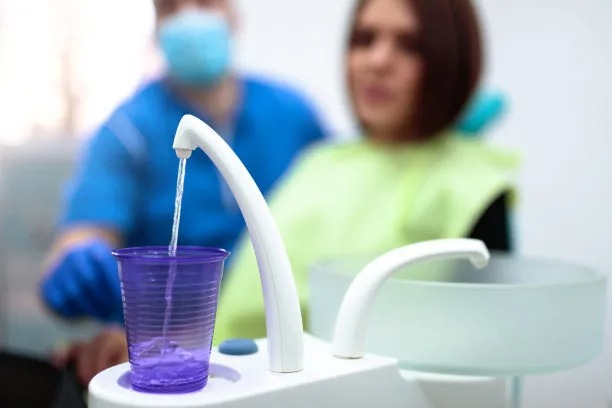Revolutionary Advances in Dental Implant Treatment Enhancing Patient Comfort and Long-Term Success Rates in Oral Rehabilitation
Summary: The field of dental implant treatment has witnessed revolutionary advances that significantly enhance patient comfort and improve long-term success rates in oral rehabilitation. This article explores four pivotal aspects of these innovations: advanced implant materials and designs, minimally invasive techniques, improved digital planning and guided surgery, and enhanced post-operative care and maintenance. Together, these advancements work synergistically to transform the patient experience, reduce recovery times, and ensure lasting outcomes. This comprehensive analysis aims to provide insights into the contemporary practices and technologies that underpin modern dental implantology, emphasizing their implications for both practitioners and patients.
1. Advanced Implant Materials and Designs
Recent innovations in dental implant materials and designs have fundamentally redefined the landscape of oral rehabilitation. New titanium alloys and ceramic implants are being developed to enhance biocompatibility, ensuring that implants interact favorably with surrounding bone and tissue. These materials not only promote osseointegration—the process by which the implant becomes anchored in the jawbone—but also reduce the risk of complications like peri-implantitis.
Furthermore, the design of dental implants has evolved to include various shapes, sizes, and surface textures tailored to individual patient needs. These personalized options lead to better fit and stability, resulting in improved comfort during the healing process. For instance, implants with roughened surfaces facilitate quicker integration into bone tissue, thus reducing the duration of the healing phase and enhancing overall patient satisfaction.
The combination of advanced materials and customizable designs contributes significantly to the longevity of dental implants. Patients can expect a higher rate of long-term success with less likelihood of needing replacements, which is a critical factor in successful oral rehabilitation strategies.
2. Minimally Invasive Techniques
Minimally invasive surgical techniques have gained prominence in dental implantology, greatly enhancing patient comfort. These techniques, such as flapless implant placement, reduce trauma to the gums and surrounding tissues, promoting quicker recovery times and less residual discomfort. Techniques like the use of piezoelectric surgical tools further facilitate precise osteotomy procedures while minimizing damage to adjacent structures.
By employing these advanced methodologies, dentists can now complete implant surgeries with reduced swelling and discomfort for patients. This improvement in procedure approach leads to faster healing, allowing patients to return to their daily lives without the prolonged downtime traditionally associated with dental surgeries.
Additionally, the reduction of invasive procedures has implications for anesthesia requirements. Many patients find less need for general anesthesia, which further enhances the overall experience. With these advancements, more individuals are likely to consider dental implants, recognizing the lower risk and greater comfort involved.
3. Improved Digital Planning and Guided Surgery
The integration of digital technology in dental implant treatment has transformed planning and execution. Digital imaging and 3D modeling allow practitioners to visualize intricate anatomical structures, resulting in more accurate implant placement. This level of precision minimizes complications and optimizes the functional and aesthetic outcomes of implants.
Guided surgery systems—wherein surgical templates are created based on digital scans—eliminate guesswork during implantation. These systems provide clear pathways for implant placement, ensuring that each implant is positioned optimally in accordance with individual patient anatomy. This technology not only enhances the accuracy of the surgeries but also streamlines the procedures, making them quicker and safer.
The benefits of improved digital planning extend beyond the surgical phase. They foster better communication between dental professionals and patients, as individuals can visualize expected results before a procedure. This transparency builds trust and ensures that patients are well-informed about their treatment options.
4. Enhanced Post-Operative Care and Maintenance
Post-operative care has also seen significant advancements, leading to enhanced patient outcomes after dental implant procedures. Understanding that recovery plays a vital role in the success of implant treatments, practitioners now emphasize individualized care plans that cater to the specific needs of patients.
Patients are provided with comprehensive post-operative instructions, including pain management techniques and oral hygiene practices designed to support healing. The advent of telehealth allows for continuous monitoring of recovery, whereby patients can reach out to their providers easily, addressing any concerns that arise in real-time.
Moreover, research has revealed the importance of regular follow-ups for implant maintenance. Regular check-ups detect potential issues early, allowing for interventions before complications arise. This proactive approach not only assures patient comfort but also extends the lifespan of dental implants, reinforcing the importance of ongoing care.
Summary:
The continuous evolution of dental implant treatment through innovative materials, minimally invasive techniques, advanced digital planning, and improved post-operative care significantly boosts patient comfort and success rates in oral rehabilitation. As the field progresses, these innovations promise to enhance the overall experience for patients while optimizing long-term outcomes.
This article is compiled by Vickong Dental and the content is for reference only.



